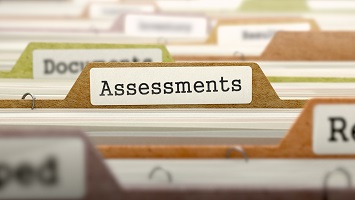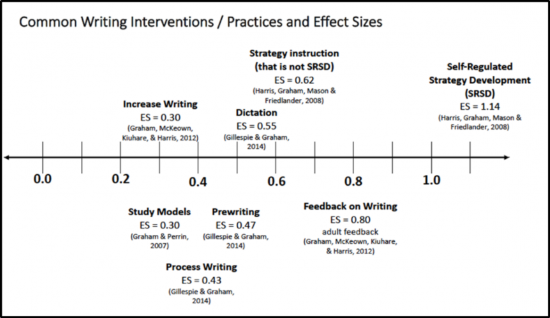 As I think is true for most people when making significant life changes, I approached my new role as a Preschool Behavior Specialist at the RSE-TASC with a mixture of excitement and trepidation. It was a big change from my previous experience working at schools for children with disabilities in Brooklyn and Manhattan, but I was ready to try something new. And new it was! Since the moment I have joined the RSE-TASC, I have been constantly learning new things and, looking back, it’s hard to believe how much knowledge I have gained in just over a year. One of the best things about my current position is the opportunity it provides me to continually be a learner and I am so grateful that expanding my professional knowledge and expertise is so highly valued by the organization.
As I think is true for most people when making significant life changes, I approached my new role as a Preschool Behavior Specialist at the RSE-TASC with a mixture of excitement and trepidation. It was a big change from my previous experience working at schools for children with disabilities in Brooklyn and Manhattan, but I was ready to try something new. And new it was! Since the moment I have joined the RSE-TASC, I have been constantly learning new things and, looking back, it’s hard to believe how much knowledge I have gained in just over a year. One of the best things about my current position is the opportunity it provides me to continually be a learner and I am so grateful that expanding my professional knowledge and expertise is so highly valued by the organization.
As a behavior specialist, my area of focus is in working with schools to support students’ social-emotional development using the positive behavior interventions and supports (PBIS) framework. However, my position is unique within the RSE-TASC, in that I focus specifically on supporting preschool and early childhood settings. When I first began, I scrambled to learn as much as I could from my more experienced colleagues, who were an incredible wealth of knowledge and source of support as I grew into my new role. However, it soon became clear just how new the idea of PBIS for preschool and early childhood settings was and that this was truly a fresh frontier for the RSE-TASC. There is extensive literature documenting the effectiveness of PBIS in K-12 settings and a seemingly endless number of resources, tools, and examples of successful programs to pull good ideas from. Though it has begun to change, it felt like PBIS for preschool and early childhood had the opposite problem – it was challenging to find any examples of preschool or early childhood programs successfully using a PBIS model.
So, throughout my first year with the RSE-TASC, one of the most important tasks I found myself tackling was simply gathering information. It wasn’t always easy, but through extensive internet research, reading of journal articles and texts, and in discussion with colleagues, especially my fellow preschool behavior specialists throughout the state, I have amassed a solid library of tools and resources focused specifically on positive behavior supports in preschool and early childhood settings. My goal is to share some of the most valuable resources I have found, so that others don’t have to go through the same labor-intensive process that I did.
One of the things that was hardest to find a clear answer to was what exactly should PBIS look like with younger learners and what were the differences between the PBIS framework for school-age (K-12) programs and preschool and early childhood programs. While it was evident that the needs of these two populations differ to some extent, it was challenging to find precise information about how these differences were reflected in the PBIS models. To add to the confusion, there are multiple names and acronyms out there for each. Swimming in a sea of acronyms including PBIS, PBS, SWPBIS, PWPBS, MTSS, and RTI for Behavior, it was often hard to decipher what was even the best search term to use when seeking out information. In time, patterns began to emerge, and I learned that the Pyramid Model, also known as the Teaching Pyramid, was a model based on PBIS that was developed specifically for early childhood settings. Once I became familiar with the Pyramid Model, I was thrilled to learn that there are some wonderful resources available through the pyramid model consortium. In addition, I found two document to be extremely useful in defining more clearly the differences between the school-age and early childhood models. Both documents highlight both the similarities and differences between the two models:
- http://www.pyramidmodel.org/uploads/9/5/6/3/956306/pyramid_and_swpbis_crosswalk.pdf
- http://ec.dpi.wi.gov/sites/default/files/imce/sped/pdf/ecspedldr-pyramid-pbis.pdf
OK, so that’s just a start! Check back in a week or two when I’ll share some additional tools that have free training materials and printable resources for teachers to use in their classrooms!


 Data-Driven Decision-Making
Data-Driven Decision-Making  Increasing Post-School Success through Interagency Collaboration
Increasing Post-School Success through Interagency Collaboration  How Can We Improve Deeper Learning for Students with Disabilities?
How Can We Improve Deeper Learning for Students with Disabilities?  Positive Classroom Management: Creating an Environment for Learning
Positive Classroom Management: Creating an Environment for Learning  Self-Determination Skills Empower Students of All Ages
Self-Determination Skills Empower Students of All Ages  Fidelity of Implementation: What is it and Why does it Matter?
Fidelity of Implementation: What is it and Why does it Matter?  Rethinking Classroom Assessment
Rethinking Classroom Assessment  A Three-Step Approach to Identifying Developmentally Appropriate Practices
A Three-Step Approach to Identifying Developmentally Appropriate Practices  Transforming Evidence-Based Practices into Usable Innovations: A Case Study with SRSD
Transforming Evidence-Based Practices into Usable Innovations: A Case Study with SRSD